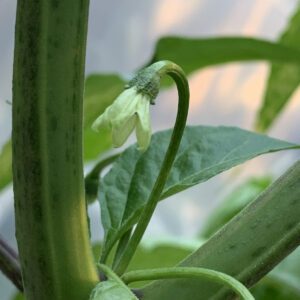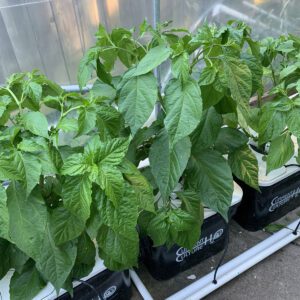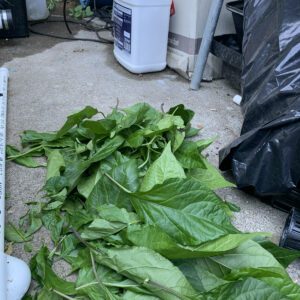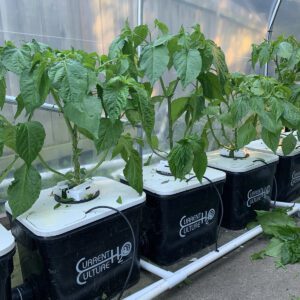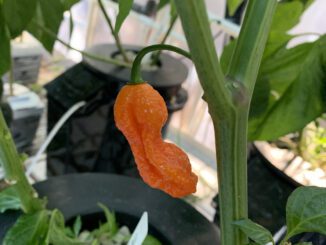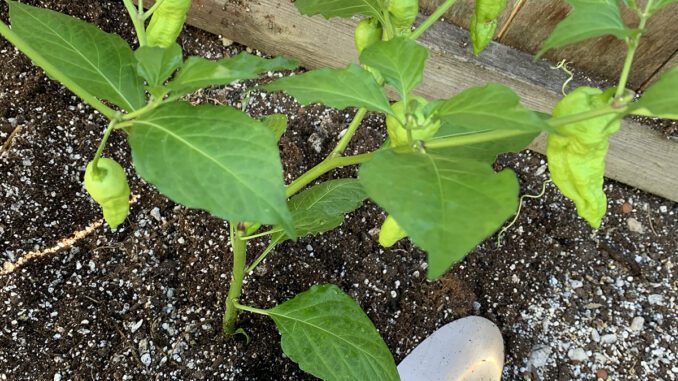
Hot Pepper Growing Tips
How To Irrigate, Prune & Ripen Hot Pepper Crops
Part Three | Part TWO | Part ONE |
These hot pepper growing tips can teach you how to irrigate, prune and ripen hot pepper crops to get the biggest and healthiest yields possible. While a lot of the discussion relates to growing hydroponically or in soilless growing mediums like rockwool, coco coir or peat mixes, the information is quite transferable to growing in conventional soil gardens too.
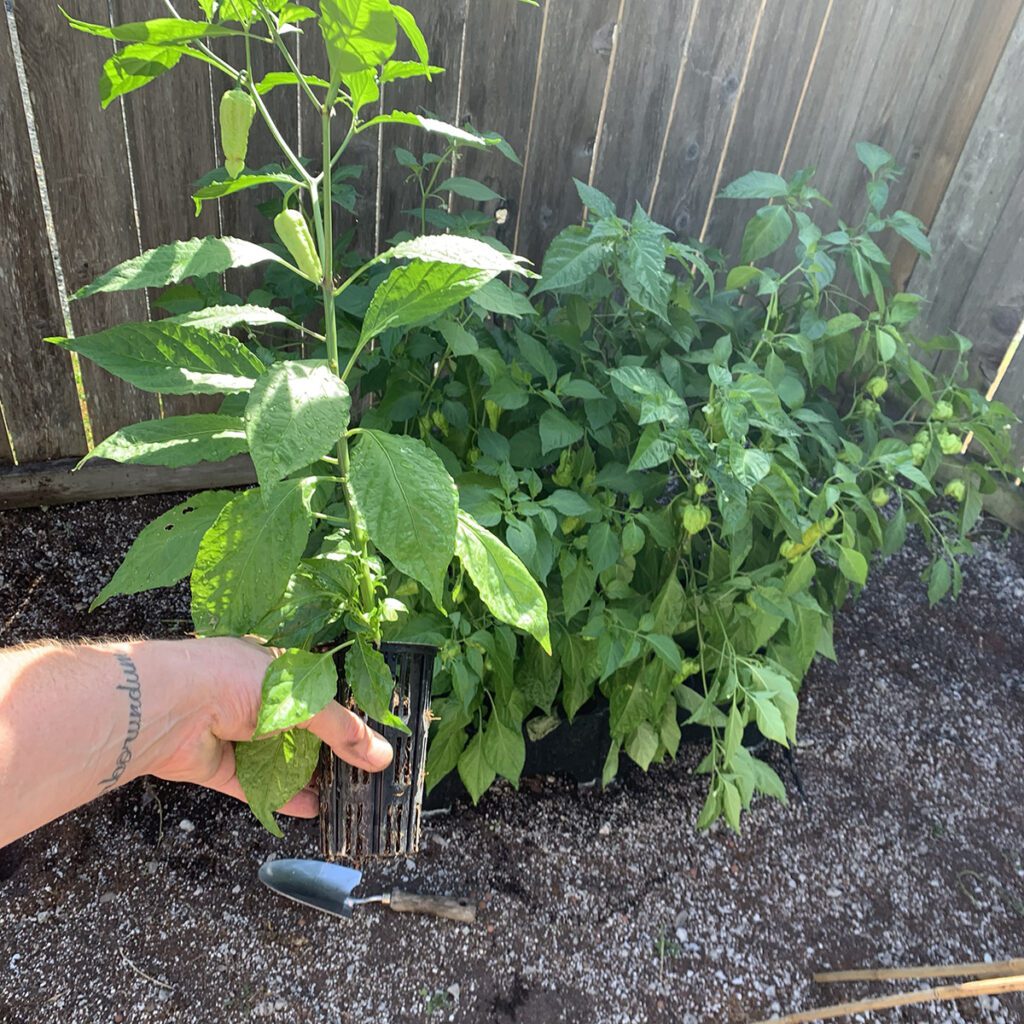
[quote]Hydroponic plants, grown in the same time frame, will benefit from having more space per plant. Supercharged growth rates can fill spaces quickly–it’s a good idea to keep up with pruning so all this energy can be channelled into increased production and keep air flow healthy through the plants.[/quote]
In Parts One & Two in our series (see links at top) we discussed seed sourcing, variety selection, germination, lighting, feeding and environment–everything you need to know to get your seeds going and to produce super healthy trouble free hot pepper plants with lots of fiery potential. Once plants are well established there’s much to do to further potentiate heavy and hot harvests–as opposed to just waiting before you can start to pick a few fresh hot peppers.
Hot Pepper Irrigation
For some growers or gardeners irrigation or watering is kept very basic, ie the soil dries and you turn the spigot and give everything a good soak. Sure this works, it will keep your plants alive in hopes that they will have healthy flowers that develop into fruits that will ripen before the growing cycle is over.
Since we have already discussed fertility in Part Two, lets look at some moisture management techniques you can use to help get the most out of your crop of hot peppers.
Crop Cruising VS Crop Steering
If you grow hydroponic hot peppers in water culture systems like DWC, RDWC, or NFT you will be practicing crop cruising. This is because these type of systems always keep the roots with direct access to aerated nutrient solution. There is no growth media in the way of absorption that needs to be managed. If the nutrient solution level is maintained, well aerated and kept optimal for EC, pH, temperature, etc you can expect tremendous growth rates, ie HUGE plants with lots of yield potential with a minimum of effort on your part–this is “crop cruising”; one of the benefits of cultivating crops in water culture.
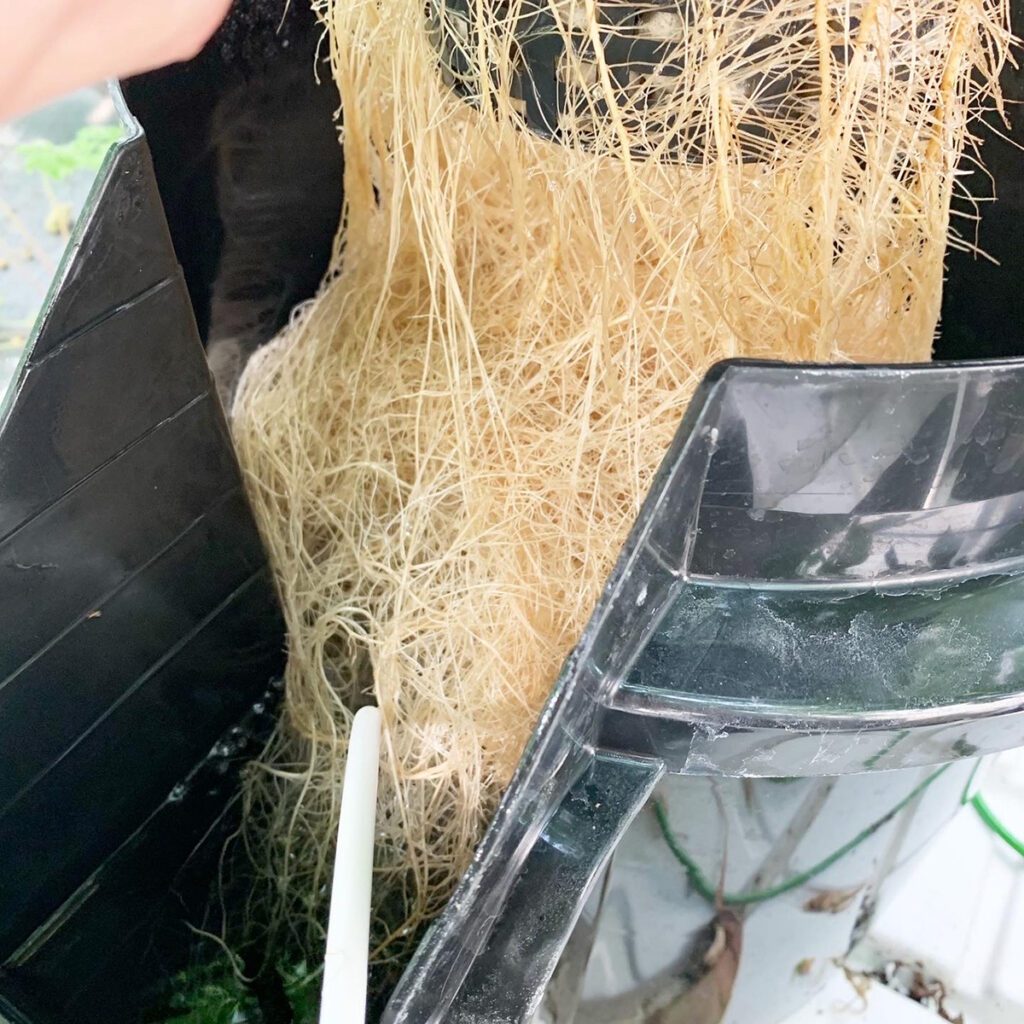
If you grow your hot peppers in pots, beds, cubes, grow bags, or aeroponics you have the opportunity to manage moisture levels which can have an influence on crop development and growth, ie Crop Steering. In simple terms, leafy growth earlier in the season can be called “Vegetative Growth”, while flowering, fruiting and ripening are often referred to as “Generative Growth”. There’s a lot you can search and read about on the topic. However, in essence keeping the media moister in vegetative growth and drier and generative growth is how most growers approach Crop Steering. Think of the natural growing season: more rain earlier in season and it tends to be drier later on in the season.
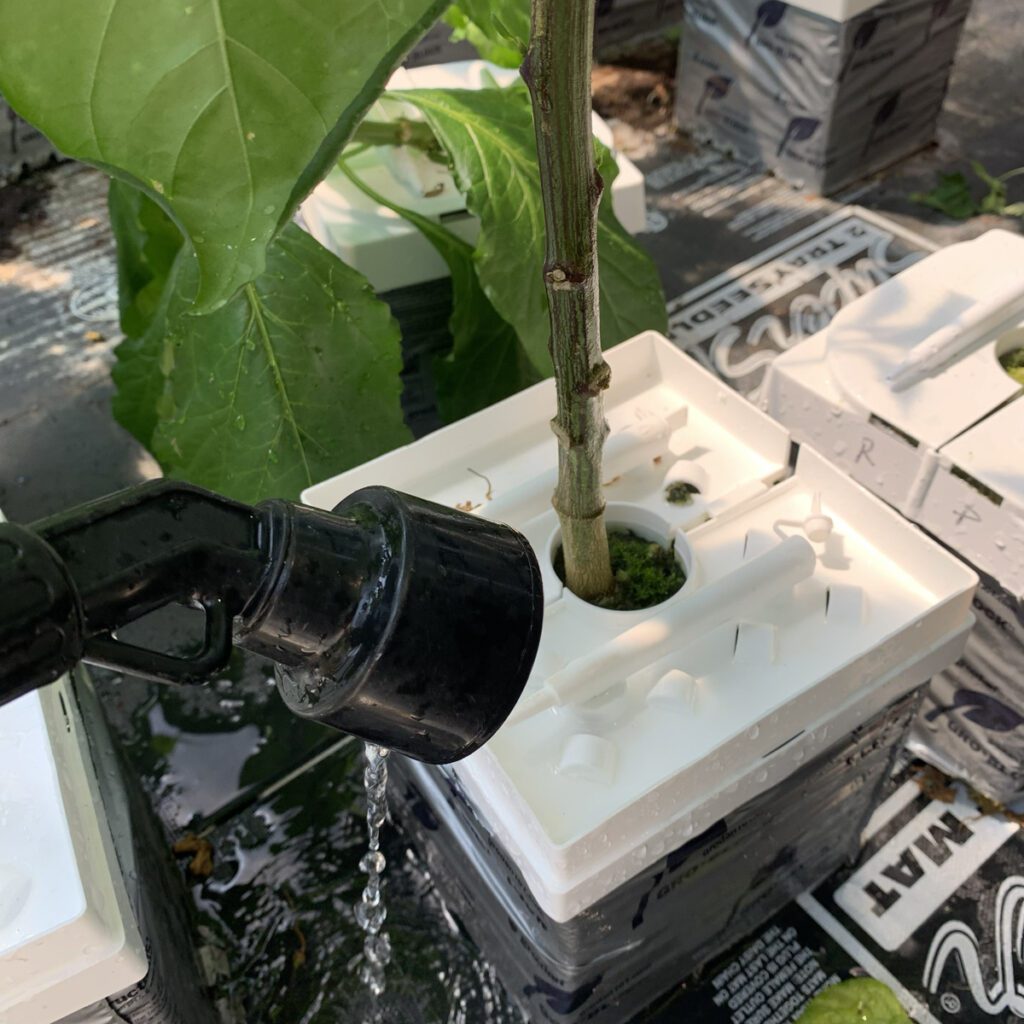
Withholding water to the point of stressing plants is not a good practice unless trying to force ripening of fruits later in the season. However, a slightly drier environment around roots stimulates robust early flowering (lessening chances of flower drop) and keeps growth tight and squat–creating more flowering sites for every foot of vertical growth. Overwatered fruit bearing plants can develop rots; sometimes inside of fruits where problems are not easily spotted (anaerobic conditions). Additionally, plants kept in wet conditions without lots of aeration are prone to problems at roots and invite issues like plant diseases and pests.
Conversely, water culture grown plants don’t tend to have these problems even though the roots are always wet. This is due to the fact that the roots are receiving lots of aeration and oxygen from air stones or recirculating nutrient solutions (aerobic conditions).
Hot Pepper Irrigation Rule of Thumb: An established fruiting Capsicum (pepper) plant can transpire around one litre or quart of water or nutrient solution daily in hot sunny weather. In hydro set-ups a float valve can add water back as it is used. In soil or soilless situations you may get better production and healthier plants when spreading out the daily water allowance over several smaller irrigations versus all at once. This is easy to accomplish with a pump and timer, ie drip irrigation system–or by hand watering with a graduated canister.
Pruning Hot Pepper Plants
As plants become established they will benefit from some pruning. Many exotic hot pepper varieties like to branch out a bit. With sufficient growing space, you can take advantage of this trait and remove lower branches, keeping 3 to 6 “mains” up top. With enough support and space this could be pushed further. However, supporting 3 to 6 well pruned mains is easy with trellising or staking; taking advantage of the vertical space available. More elaborate supports can be constructed if you want to encourage more branching.
Growing in soil or soilless methods, you likely won’t need to do a whole lot of pruning as hot peppers plants tend to grow fairly compact naturally.Its usually a good idea to remove the very bottom branches and lower 1/3 of the foliage. Having good airflow through the plant canopy promotes stronger flowering and better fruit sets. Eliminating foliage or branches that are close to the ground surface helps remove the “bridge to troubles” too.
With water culture growing methods, hot pepper plants can achieve some pretty impressive statures–far beyond what the seed pack says the plants can do. Hydroponic plants, grown in the same time frame, will benefit from having more space per plant. Supercharged growth rates can fill spaces quickly–it’s a good idea to keep up with pruning so all this energy can be channelled into increased production and keep air flow healthy through the plants.
Hot Pepper Ripening Tips
One of the handiest hot pepper growing tips we can offer helps to speed up and promote even ripening in the crop. This can be especially important, as hot papers can take a lot of the season to establish and set fruit. In some regions, it may start to get cool and less sunny before all the peppers are ripened and harvested. Make no mistake, vine ripened is best and hot peppers have the best qualities when ripened in warm weather (so start seeds early as possible!).
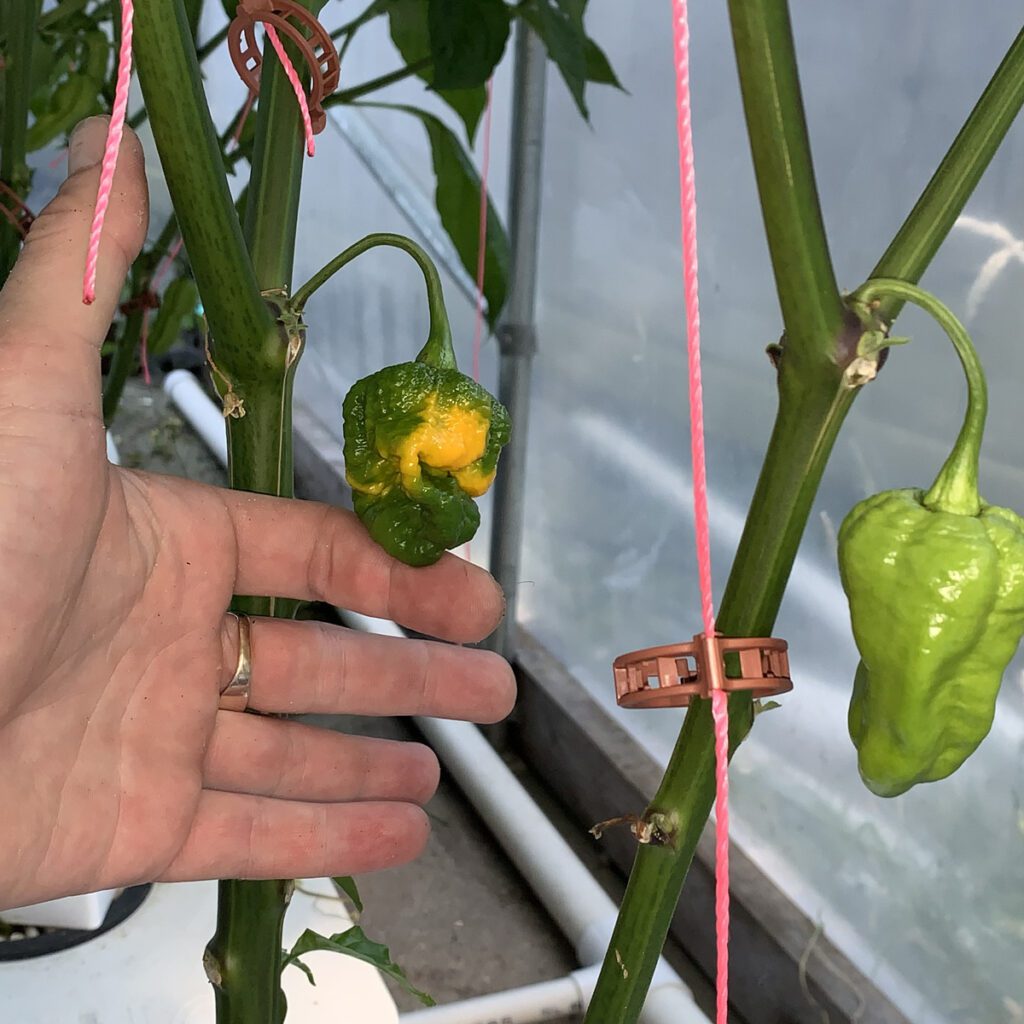
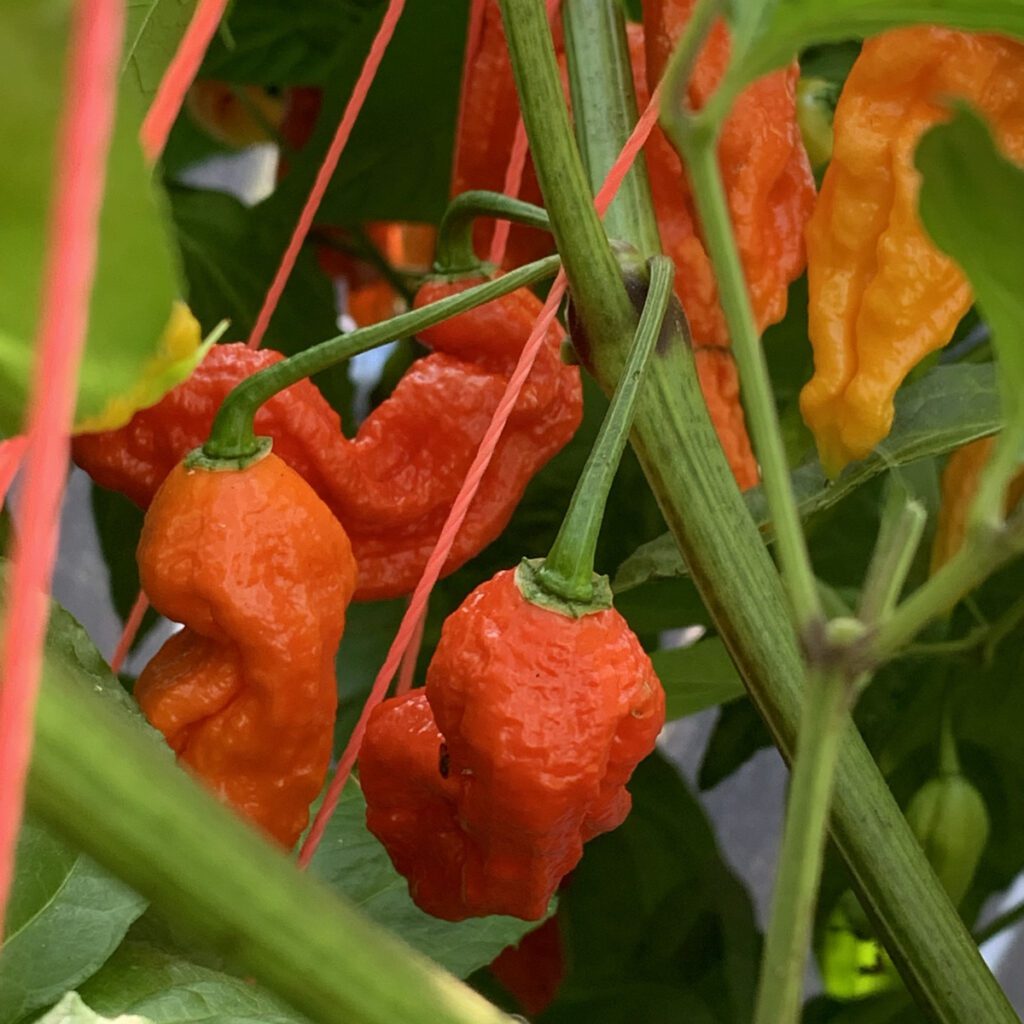
Once you have lots of fruits and you can see some of the peppers starting to turn colour, you can help hasten the process by giving the plants a strong feeding with lots of Potassium (the “K” in N-P-K fertilizer labels) with some Phosphorous and low levels of Nitrogen. Most Bloom or Bud Booster supplements fit this description. Try upwards of 1800 PPM for a couple of feedings and then back off irrigation frequency and water sparingly after–we saw differences very quickly using this method.
Letting the growing medium dry out between light waterings and allowing the nutrient solution level to drop a few inches in hydroponic systems like DWC and RDWC also helps signal the crop to channel remaining energy into ripening, ie the natural life cycle is coming to an end.
Harvesting Hot Peppers
Congratulations, you did it! Whether you want to use fresh or intend to make sauces, salsa, etc you should handle the fruits with care. ALWAYS wear gloves when handling or harvesting hot peppers–and NEVER touch your eyes after handling. You’ll only make that mistake once. Be gentle, the fruits can bruise. While you might not see the damage right away, bruised fruits can start to rot early in storage, possibly contaminating surrounding fruits. Don’t pack the fruits too closely together or too deep–make sure they have lots of “breathing room”. DO NOT seal the harvested fruits in bags, jars, containers, etc–they will rot. Store in a cool, dark, dry area. The fridge is good, although it’s surprising how well they keep unrefrigerated. As a final note, we found the water culture grown hot peppers have a tremendous shelf life over other types.
TIP: you can make Salsa Verde or Verde Hot Sauce with unripened peppers, or try force ripening them in a paper bag with some green bananas. The secret is ethylene–the naturally occurring ripening hormones that is given off as a gas.
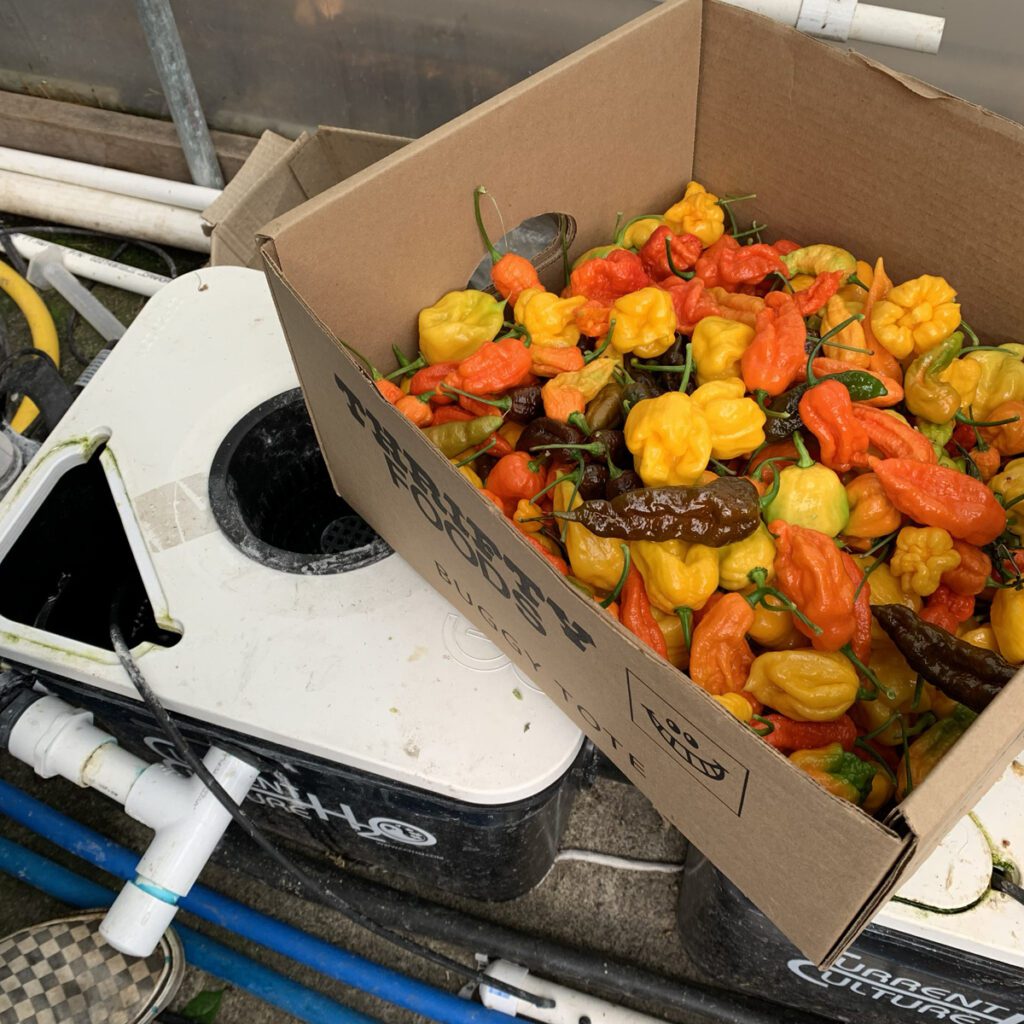
NEXT: In our final instalment for hot pepper growing tips we’ll discuss post harvest handling and processing, including step by step instructions on how to make the most flavorful hot sauce you ever tasted that boasts a long and stable storage life!

